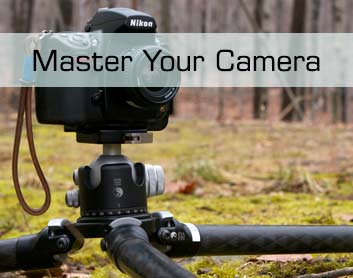The ideal scenario for choosing the all-in-one iMac is this: you love minimalistic industrial design, you like the Apple monitor that’s integrated into the machine, and your needs for application and data storage are small enough to fit onto a single internal hard drive; you like using external drives for storage and backup, too.
You like the idea of extra processor cores for demanding tasks, but don’t need Xeon chips, nor do you require 6 or more cores. You’re a little more budget minded and understand that the law of diminishing returns also applies to computer hardware.
Choosing an iMac also means you’re not too interested in adding obscene amounts of memory to your new machine. Chances are, you’re comfortable with a modest 16GB. In contrast, the Mac Pro is capable of accommodating 128GB in the 12-core machine.
The only caveat in choosing the 2012 iMac is this: it will be extremely difficult to open the computer for service and doing so will probably void your warranty, even for a hard drive swap. Keep this in mind if you choose the iMac for your primary machine.
The 2012 Apple iMac Is A Fantastic All-In-One Machine Capable of Blazing Fast Photography Workflows
Now that you have the ideal scenario in front of you, let’s get down to configuring the machine for your photography workflow.
Which Base Model Should I Choose?
Don’t even waste your time with the 21.5" iMac model. You plan on editing your high resolution files right? The 27 inch model is your starting point. You’re going to want the fastest processor available so that means choose the 3.2GHz i5 processor model and scale up to the 3.4 GHz i7 quad core in the processor customization section. I mentioned the iMac route was more affordable than the Mac Pro, but you will still pay for performance.
How Much RAM Should I Get?
A really crucial difference between the 21.5″ and the 27″ iMac is the difference between preconfigured RAM and user serviceable RAM. If you were to go with the 21.5″ model, you’re stuck with what you get at the factory. That’s a big no-no because your ability to expand is taken away.
Ignore the memory options on the configuration (keep the default) and head on over to Other World Computing for your memory. I recommend 16 gigabytes at a minimum because you want to minimize your swap space usage. If you can swing 24GB or 32GB go for it. Trust me, there is no better bang-for-your-buck upgrade here. Just set it and forget it.
Hard Drive Choices
Unfortunately, you won’t have anywhere near the internal storage capacity of the Mac Pro; the 2012 iMac provides no room for adding additional internal hard drives; that slick looking, super thin design has its storage shortcomings; this is one of the reasons I think the Mac Pro is the best choice for photographers.
Hard drive accessibility is really the major shortcoming with the all-in-one iMac. If you demand 24/7 uptime and don’t trust yourself opening a sealed machine to service parts like the hard drive, this computer is not right for you. Yes, you’ll pay more for a Mac Pro and yes, it’s currently a little long in the tooth, but it will still outperform most machines with the added convenience of a service door.
If you’re still reading and haven’t flipped back to the Mac Pro, you have several factory hard drive options: 7200 RPM SATA, Fusion, or SSD. While I don’t have any experience with the new Fusion technology, I still think a solid state drive is the best option because it is the fastest out of the choices available. Do this now at factory build time or you will probably void the iMac warranty by changing the hard drive to something else after the initial build. If you can afford it (and the Apple premium), go for it, otherwise choose one of the other options.
External storage is always available if you need more space, and the added USB 3.0 ports are a welcome addition to this machine. You’ll get fast performance using this architecture and can also use the Thunderbolt ports if you’re so inclined and willing to pony up for the expensive drives currently on the market.
Other Recommendations and Closing iMac Suggestions
The 2012 27″ iMac is a great all-in-one machine for photography workflows. You’ll definitely notice a performance gain over laptop hardware and have the ability to add external storage through USB 3.0 and Thunderbolt ports. Keep in mind cost vs. performance gains when deciding your external hard drive interface. For the fastest throughput, Thunderbolt is the clear winner – at a high cost though. USB 3.0 would be my choice here.
The only downside that I see with the 2012 iMac are the non-serviceable parts; if a hard drive fails, you will need to visit a store and have Apple repair it. The Mac Pro, on the other hand, has lots of space to work inside and is a breeze to swap out drives and be up and running in minutes if drive failure occurs.
Overall, the iMac is a solid machine and will keep up with even the most demanding photography applications. The 2012 iMac is fast, fast, fast and should last for years to come.
Return from 2012 iMac Recommendations to How to Choose a Computer For Photography

